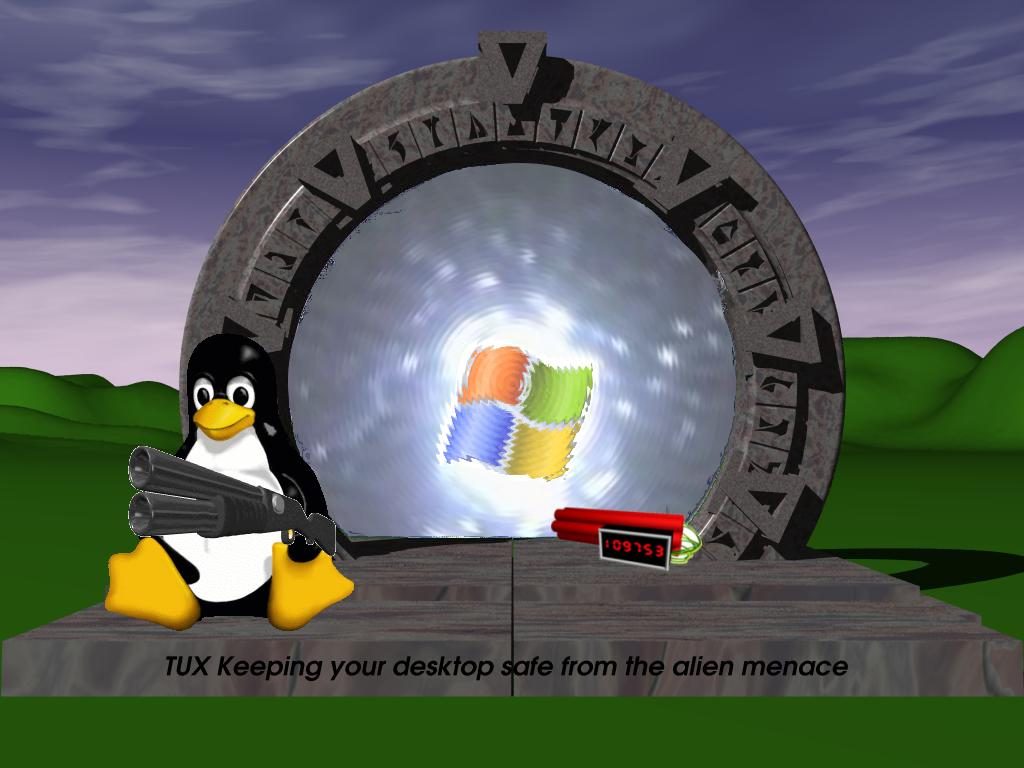
Linux & Stargates
The talk has been rescheduled: it is now April 4th, 2018, same place: University of the Sciences, same time: 7pm.
Some new stuff: thanks to the 7th observation of a gravitational wave, the speed of gravitational waves is now known to be the speed of light. And researchers have built a carillion using black hole frequencies as the pipes.
I’ll be doing my StarGates talk at the Philadelphia Linux meeting at the University of the Sciences this coming Wednesday.
Why StarGates & Linux?
- Both are really cool.
- Both take us to the limits of the possible.
- And both let us push the limits of the possible another half-step beyond where it is.
As to #1, if you are reading this the odds are you are already current with the cool of each.
And #2 goes without saying: Linux is an amazing work, putting the most powerful general purpose operating system in the hands of the open source community, in the hands of the world.
But #3 — extending the limits of the possible — is what I will be focusing on in my presentation: by asking questions about the impossible, we can extend the reach of the possible: get our grasp a bit closer to our reach, as the saying goes.
So March 7th, at the University of the Sciences in Philadelphia, at 8pm, great if you can make it, and if not, have your imagination hop over & have a look.
To infinity and beyond!
Tux & StarGates from Linux-Lovers
I’ve posted my talk on the Theory & Practice of Invisibility to ShareShare. I’ve given the talk at Balticon, FOSSCON, & Capclave, & will be giving it at Philcon in a few weeks.
At Capclave, NASA asked if I would give it at their Goddard Space Center, once the sequester is lifted. Nice to be asked!
Balticon records the talks in the science track, so at some point a video record should be online. The last page on SlideShare has the references; I’d start there.
I’m not really sure why I decided to do invisibility for Balticon; Miriam Kelly, who organizes the science track at Balticon, asked me what I was going to talk about this year, & the next morning I woke up knowing the title. Then there was the awkward few weeks while I tried to attach a talk to the title.
It’s a great subject; the main problem was really to throw enough out that the rest would fit into a 50 minute hour. Seemed to go OK, lots of questions during the talk & afterwards in the halls. That’s the real test.
One thing I like about the subject is that it leads in so many directions, among which:
- It’s about the math. One of the limiting factors is just getting enough control over the mathematics of bending light to create the appropriate cloaking effect. Any subject that borrows math from general relativity in the interests of simplifying itself is complex!
- It’s about the money. The more money, the more transparency! In general, you can make things invisible from specific angles, over specific frequency ranges, to a certain level of quality.
- It’s not about the media: the general approaches for making something invisible are the same for visible light, for radar, for sound waves. One application under discussion is to make cities invisible from earthquakes: arrange for the seismic shocks to pass around the city for instance.
- The hype to results ratio is still pretty high. This is normal when an area is just starting; longer term, the most important uses are likely to be ones we haven’t even dreamt of.
- Making things invisible & making them visible are two sides of the same coin, like attack & defense in war, to master either we must master both.
- And, finally, while the future of invisibility may not be clear, our motives in studying it are transparent: it’s interesting, potentially profitable, and fun.
I had a lot of fun putting my NASA talk Temporal Paradoxes together. The feedback I got from the assembled multitude at the Radnor Library last week was extremely helpful, leading to a near complete rework of the talk, in the interests of making it clearer. Thanks!
The pdf & keynote versions are now online.
 Announcement, How To, Interpretations of Quantum Mechanics, Paradox, Popular, Quantum Gravity, Quantum Mechanics, Theories of Time, Time, Time Machines | John Ashmead |
Announcement, How To, Interpretations of Quantum Mechanics, Paradox, Popular, Quantum Gravity, Quantum Mechanics, Theories of Time, Time, Time Machines | John Ashmead |  March 20, 2011 1:59 pm |
March 20, 2011 1:59 pm |  Comments Off on Temporal Paradoxes Talk Online
Comments Off on Temporal Paradoxes Talk Online
